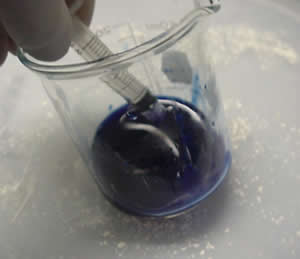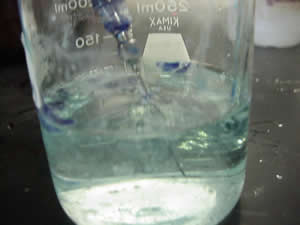Tear up 1 sheet of tissue paper into a 250ml beaker.
Add 2 grams of copper carbonate.
Add 30ml of 50% ammonia solution and stir until the paper dissolves.
Place 60 2M H2SO4 solution in a separate beaker. With a small syringe inject the blue solution into the 2M H2SO4 solution. Click to see a 120kb video

The cuprammonium
process converts cellulose to a soluble compound by combining it with
copper and ammonia.
The first step in this demonstration is a reaction of a saturated copper(II)
carbonate solution with aqueous ammonia to produce copper hydroxide. The
reaction is shown below.
Cu2+(aq) + 2OH-(aq) => Cu(OH)2(s)
The copper hydroxide reacts
with aqueous ammonia to form tetraaminecopper(II) hydroxide, Cu(NH3)4(OH)2,
which dissolves the
cellulose.
Once the cellulose dissolves use a syringe to draw up some of the blue solution.

